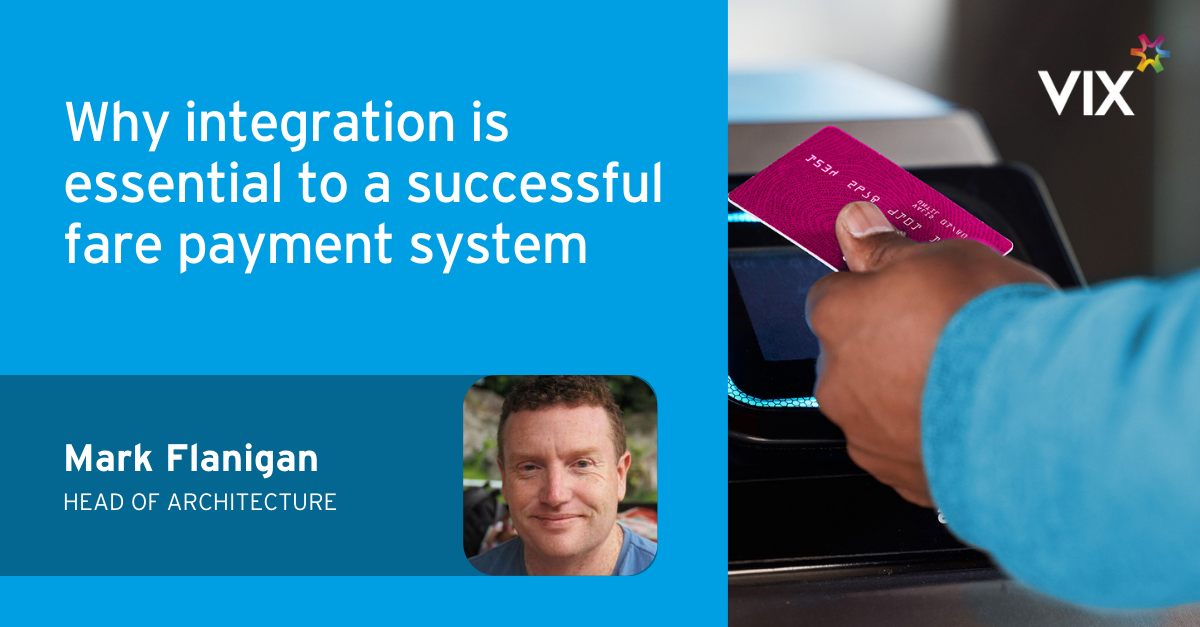Why integration is essential to a successful fare payment system
19 March 2024,
Mark Flanigan discusses the challenges of delivering a fare collection system that seamlessly integrates within an agency’s network.

If you’ve ever implemented a new IT system in your organization, you’ll know that it’s very difficult to consider it in isolation. There are always other systems and tools that it needs to work with – whether for sharing data, enabling communication, or handing off from one step in a process to another.
Transit agencies are no different. From small to large, they have multiple IT systems and devices that are very important to running their business. Whether it’s the executive team, finance, HR, transport planning, marketing, customer service or procurement, all of them have their own systems that make up the overall IT landscape.
Fare collection systems are critical to transit agencies delivering their service to passengers and collecting the revenue they need, so it’s vital to have the right integrations to ensure it runs smoothly and reliably. Along with back-office systems there are also many things on the vehicle, train station or light rail platform that might require integration as well.
Anyone who works in IT knows that it’s never straightforward to bring those different IT systems together, as typically they are from different vendors, of different vintage and use different technologies.
So how do we do it?
What integrations might transit agencies require for their fare collection system?
At Vix, we’re used to integrating our automated fare collection solutions with multiple systems. In fact, we made integration one of our core principles when we built Pulse because we know it’s such an important requirement.
Here are some integrations that we often get asked to do:
- Integration with ERP or Accounting software
- Data Warehouse integration and Reporting
- Customer Websites and Mobile Applications
- Customer Service Applications
- On Vehicle CAD / AVL solutions
- Transport Planning solutions
Examples of key integrations are shown in the table below:

These are all based on real examples from Pulse deployments in cities like Phoenix and Edmonton. Each of these systems required us to come up with a slightly different solution for integration.
Automated fare collection and integration: the key is flexibility
Over the years we’ve delivered many different integrations to enable passengers and agencies to achieve their goal of seamless transportation for their customers. These integrations enable transit agencies to take advantage of a new and modern fare collection system and enhanced data insights, all while maintaining business as usual elsewhere.
The Vix approach is to keep our solutions as open and flexible as possible. We can provide our APIs to the integration partners, work with partners to use existing APIs or use a standard already in place. Flexibility is key – the point is always to find the best solution for that integration.
Every integration we do with Pulse is possible because of its open and flexible architecture, enabling it to integrate with our partners’ existing systems, banks and third party systems. We make sure not only that the integration is done, but that it’s done correctly – in a way that best meets our customers’ needs.
